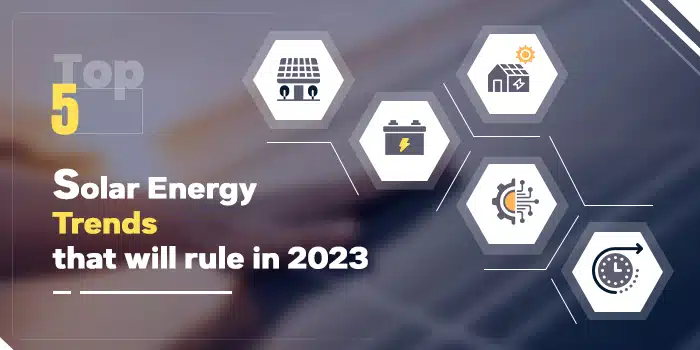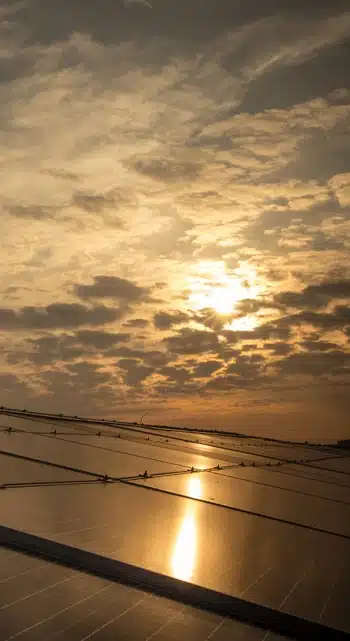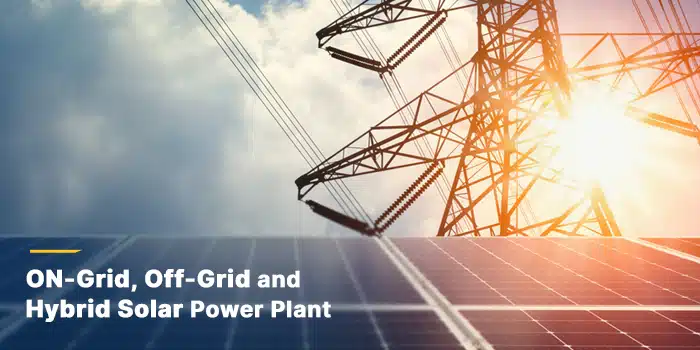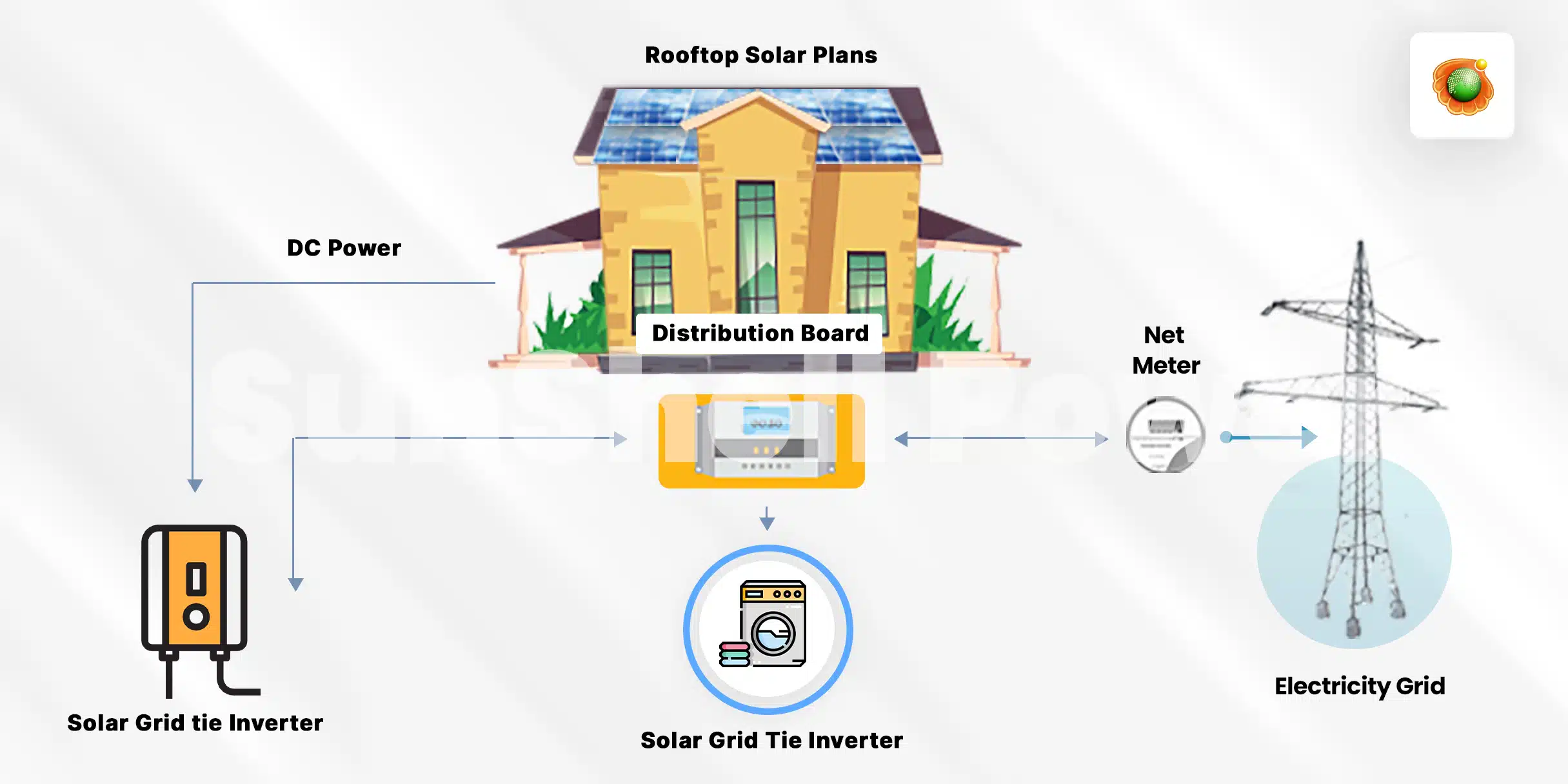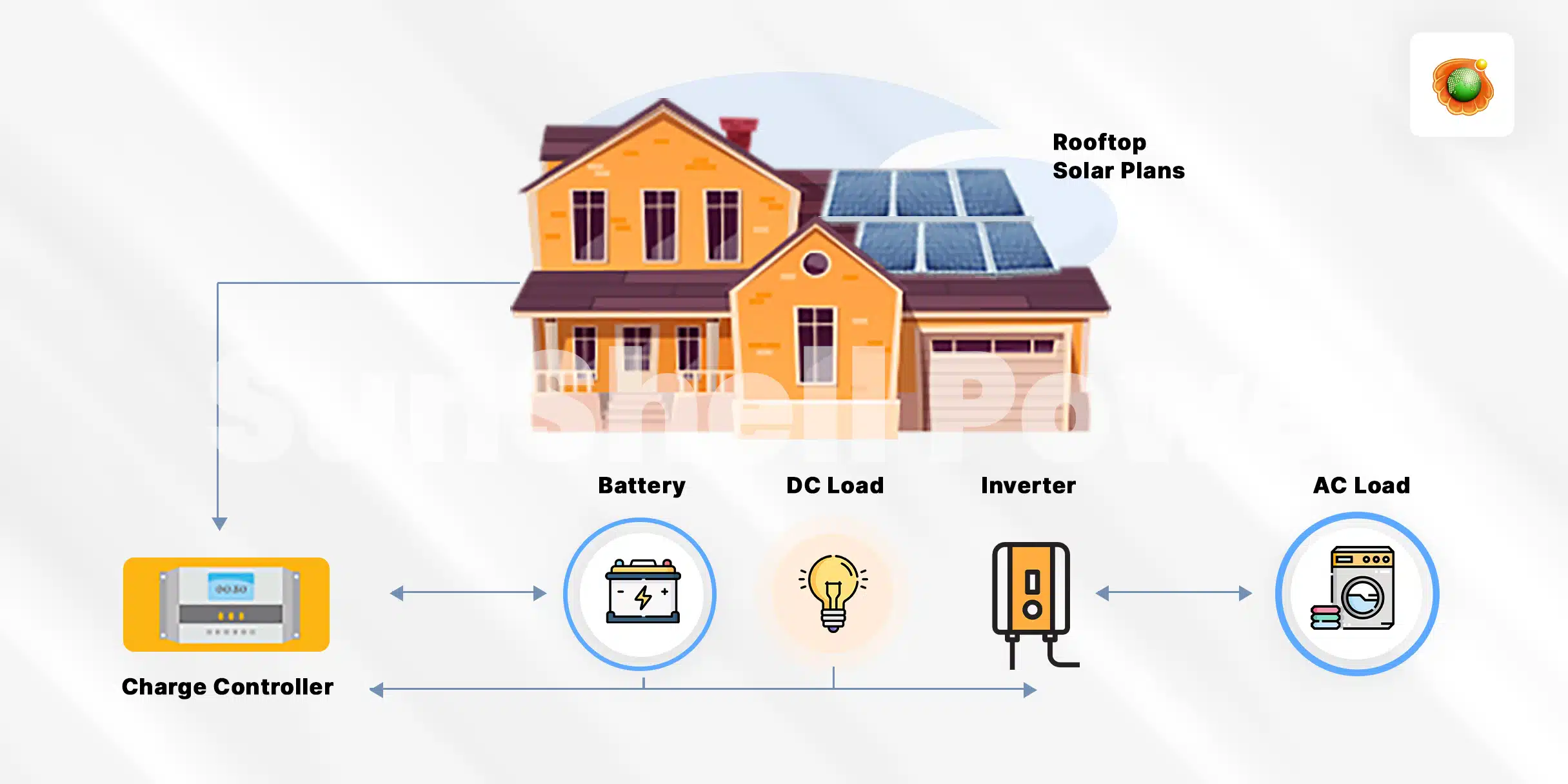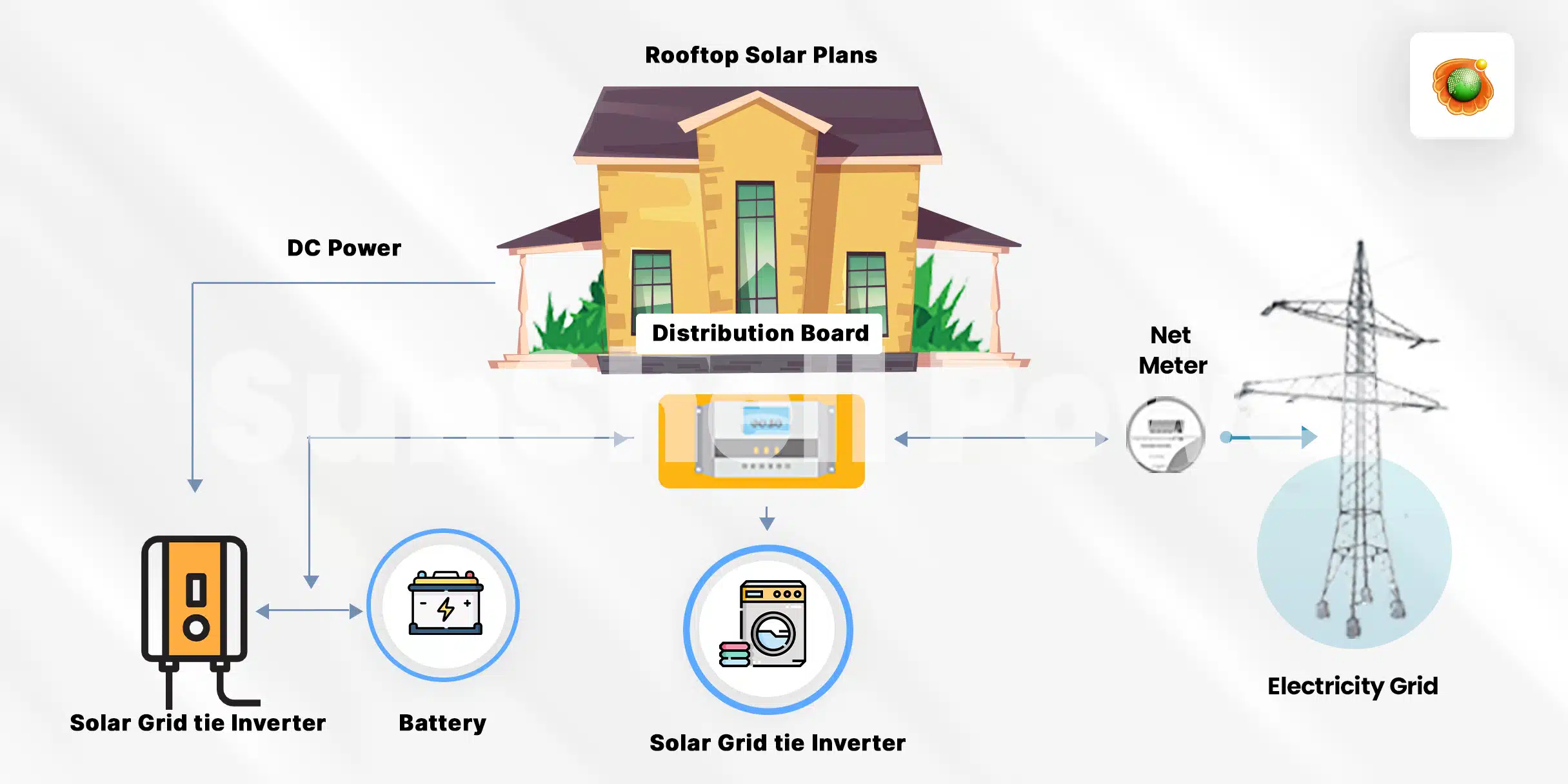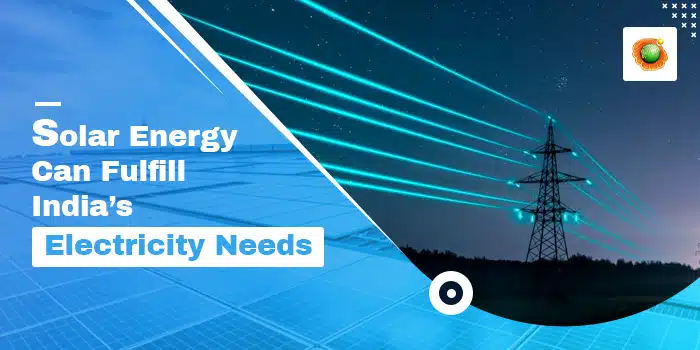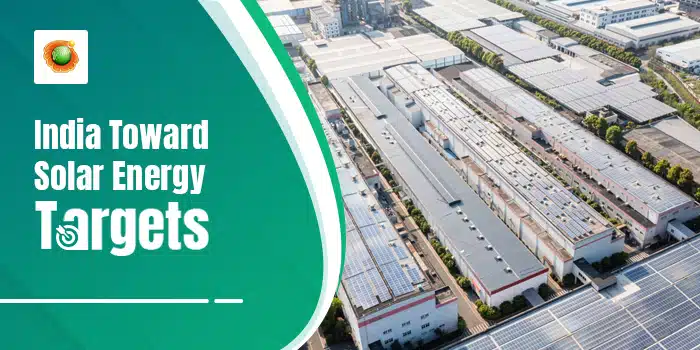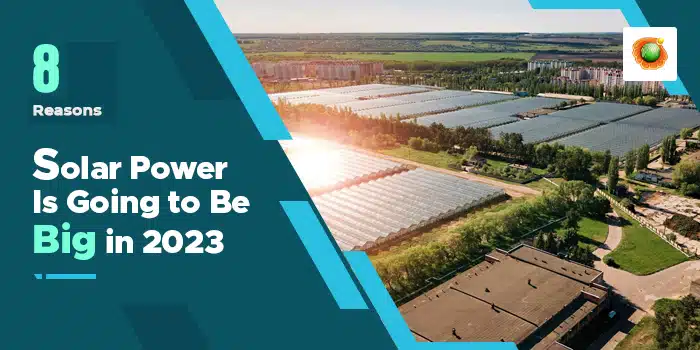Solar systems that are connected to the grid are by far the most prevalent and frequently used by homes and businesses. These systems don’t require batteries and instead rely on solar inverters or micro-inverters to connect to the power grid. You normally get paid a feed-in-tariff (FiT) or credits for any extra solar power you create when you export it to the electrical grid.
On-grid solar systems, unlike hybrid systems, cannot work or generate electricity during a blackout for safety concerns.
- Grid-connected solutions are typically less expensive because they do not require batteries or other equipment.
- This system is ideal for those who don’t have the space or funds to build a solar system large enough to cover their whole energy consumption. If necessary, you can continue to draw electricity from the grid.
- During the night or on overcast days, net metering permits the electricity generated by a solar system to offset the electricity used from the grid.
- The grid connection serves as a cost-effective and dependable storage option.
- Solar Renewable Energy Credits (SRECs) allow grid-tied system owners to earn extra money by selling the SRECs, their system generates.
Disadvantages of on-grid solar power plant
- The system is not entirely self-contained from the grid.
- As on-grid solar systems do not have batteries, they cannot work or generate electricity during a blackout for safety concerns.
An off-grid system is not connected to the power grid, it requires battery storage. Off-grid solar systems must be designed properly so that they can generate enough power throughout the year and have enough battery capacity to satisfy the home’s needs, even in the dead of winter when sunshine is scarce.
Off-grid systems are substantially more expensive than on-grid systems due to the high cost of batteries and off-grid inverters. They are typically only needed in more distant places that are far from the electrical grid.
Advantages of off-grid solar power plant
- The system is completely independent of the grid
- A wonderful solution for disadvantaged communities and distant regions.
- They are more costly.
- Batteries are necessary to provide steady electricity throughout the day and night.
- Excess energy production could be wasted.
- Batteries need to be maintained and have a short lifespan and degrade quickly.
Hybrid Solar Power Plant
Modern hybrid systems integrate solar and battery storage into one system and come in a variety of forms. This permits solar energy generated during the day to be stored and used at night. When the stored energy runs out, the grid comes to the rescue, giving customers the perfect combination. Hybrid systems can also charge the batteries with less expensive off-peak electricity.
Battery bank
After the solar power is used by your property’s appliances, any extra power is transmitted to the battery bank in a hybrid system. The battery bank will stop receiving power from the solar system once it is fully charged. The battery’s energy can then be discharged and used to power your home, usually during peak nighttime hours.
Net Metering with grid
Once your batteries are fully charged, excess solar power not required by your appliances can be exported to the grid via your metre, depending on how your hybrid system is set up and whether your utility allows it. When your solar system is not in use and the usable power in your batteries has been depleted, your appliances will begin to take power from the grid.
Advantages of Hybrid Solar System
- It aids in the storage of surplus solar energy.
- This stored solar energy can be utilized.
- Hybrid inverters always come with a power backup system.
Disadvantages of Hybrid Solar System
- The high cost of batteries is frequently an issue.
- Payback time might be higher than other solar power systems.
- Installation cost is high
- Installation of such systems requires more space.
